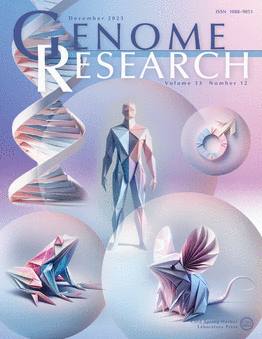T2T-CHM13 improves read mapping and detection of clinically relevant genetic variation in the Swedish population
IF 5.5
2区 生物学
Q1 BIOCHEMISTRY & MOLECULAR BIOLOGY
引用次数: 0
Abstract
The T2T-CHM13 reference genome, released in March 2022, fills in the 8% of the human genome that were not resolved in GRCh38 and reconstructs large parts of the known genome. The more accurate and complete reference genome is expected to improve the quality of read mapping and variant calling. Even though whole genome sequencing (WGS)-based approaches have become the golden standard in medical genetics, the extent of these benefits still remains unclear. In this study, we aim to evaluate mapping quality and variant call performance with T2T-CHM13 as a reference using a cross-sectional Swedish cohort (SweGen) comprising 1000 individuals with short-read Illumina WGS data available. Remapping and variant calling was performed using the nf-core/sarek pipeline. T2T-CHM13 improved a wide range of mapping and variant calling related metrics, including a higher fraction of properly paired reads, lower mismatch rate, and more uniform coverage of coding regions. Moreover, the fraction of ambiguous alignments was higher, reflecting segmental duplications that were incorrectly collapsed in GRCh37 and GRCh38. In comparison to GRCh38, we identified 10 million additional variants in the cohort, including 5.5 million singletons, and observed an increased sensitivity for rare variants. SnpEff assigned impact ratings of moderate or high to 13% more variants in T2T-CHM13 than GRCh38. In summary, we conclude that T2T-CHM13 improves alignment metrics with higher mapping quality, better variant calling performance and confidence, including for rare and deleterious variants. The T2T-CHM13 genome reference thus facilitates enhanced discovery of new disease-causing variation, benefiting, for example, rare-disease diagnostics.T2T-CHM13改善了瑞典人群中临床相关遗传变异的读取定位和检测
T2T-CHM13参考基因组于2022年3月发布,填补了GRCh38中未解析的8%的人类基因组,并重建了大部分已知基因组。更准确和完整的参考基因组有望提高读图定位和变异召唤的质量。尽管基于全基因组测序(WGS)的方法已成为医学遗传学的黄金标准,但这些益处的程度仍不清楚。在这项研究中,我们的目标是评估映射质量和变体调用性能,以T2T-CHM13作为参考,使用瑞典的横断面队列(SweGen),包括1000个具有短读Illumina WGS数据的个体。使用nf-core/sarek管道执行重新映射和变体调用。T2T-CHM13改进了广泛的映射和变体调用相关指标,包括更高比例的正确配对读取,更低的错配率和更统一的编码区域覆盖。此外,模糊比对的比例更高,反映了GRCh37和GRCh38中错误折叠的片段重复。与GRCh38相比,我们在队列中发现了1000万个额外的变异,包括550万个单基因,并观察到对罕见变异的敏感性增加。SnpEff认为T2T-CHM13中或高影响等级的变异比GRCh38多13%。总之,我们得出结论,T2T-CHM13改进了校准指标,具有更高的映射质量,更好的变体调用性能和置信度,包括罕见和有害的变体。因此,T2T-CHM13基因组参比有助于加强发现新的致病变异,例如有利于罕见疾病诊断。
本文章由计算机程序翻译,如有差异,请以英文原文为准。
求助全文
约1分钟内获得全文
求助全文
来源期刊

Genome research
生物-生化与分子生物学
CiteScore
12.40
自引率
1.40%
发文量
140
审稿时长
6 months
期刊介绍:
Launched in 1995, Genome Research is an international, continuously published, peer-reviewed journal that focuses on research that provides novel insights into the genome biology of all organisms, including advances in genomic medicine.
Among the topics considered by the journal are genome structure and function, comparative genomics, molecular evolution, genome-scale quantitative and population genetics, proteomics, epigenomics, and systems biology. The journal also features exciting gene discoveries and reports of cutting-edge computational biology and high-throughput methodologies.
New data in these areas are published as research papers, or methods and resource reports that provide novel information on technologies or tools that will be of interest to a broad readership. Complete data sets are presented electronically on the journal''s web site where appropriate. The journal also provides Reviews, Perspectives, and Insight/Outlook articles, which present commentary on the latest advances published both here and elsewhere, placing such progress in its broader biological context.
 求助内容:
求助内容: 应助结果提醒方式:
应助结果提醒方式:


